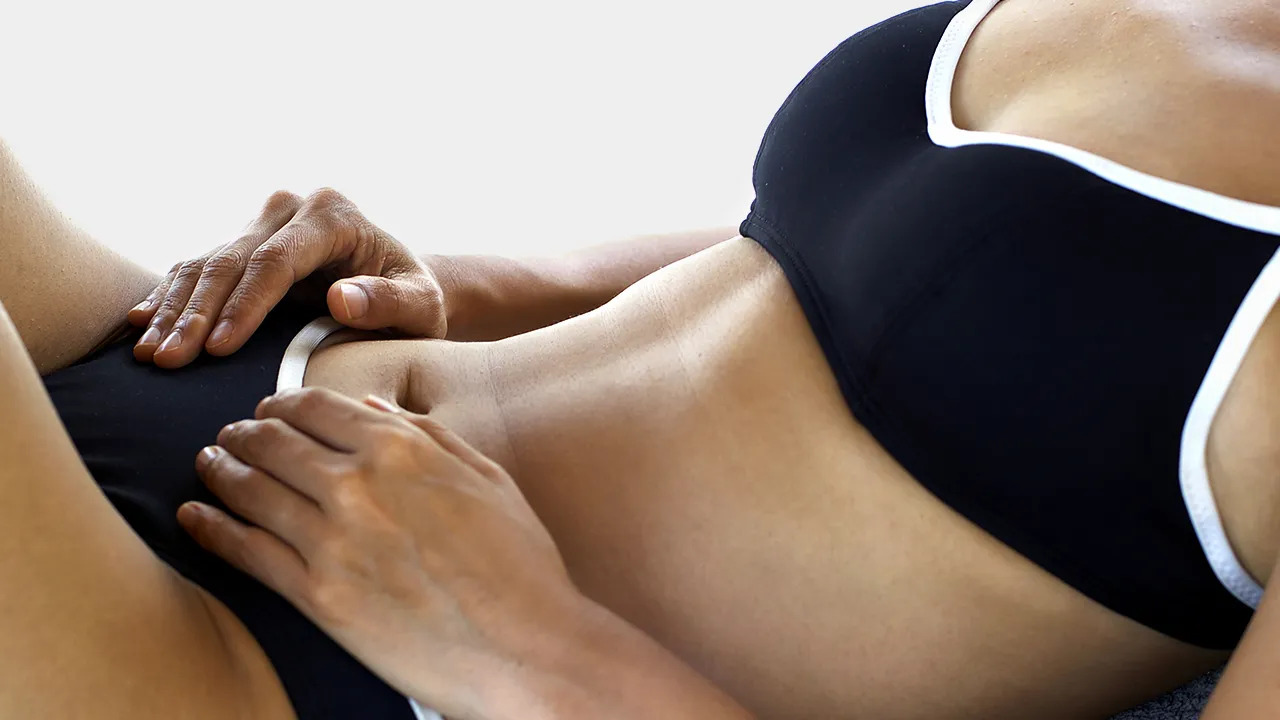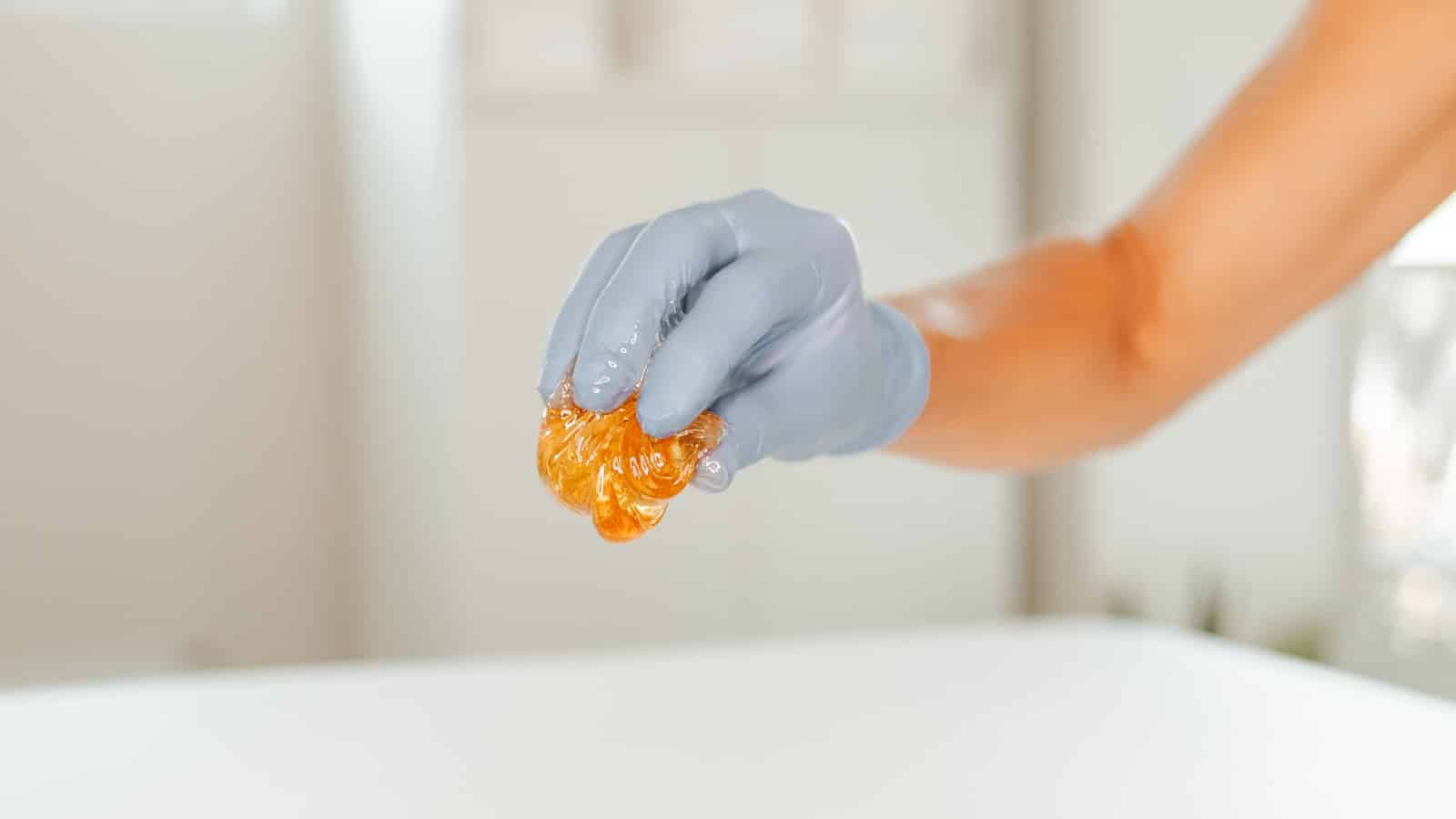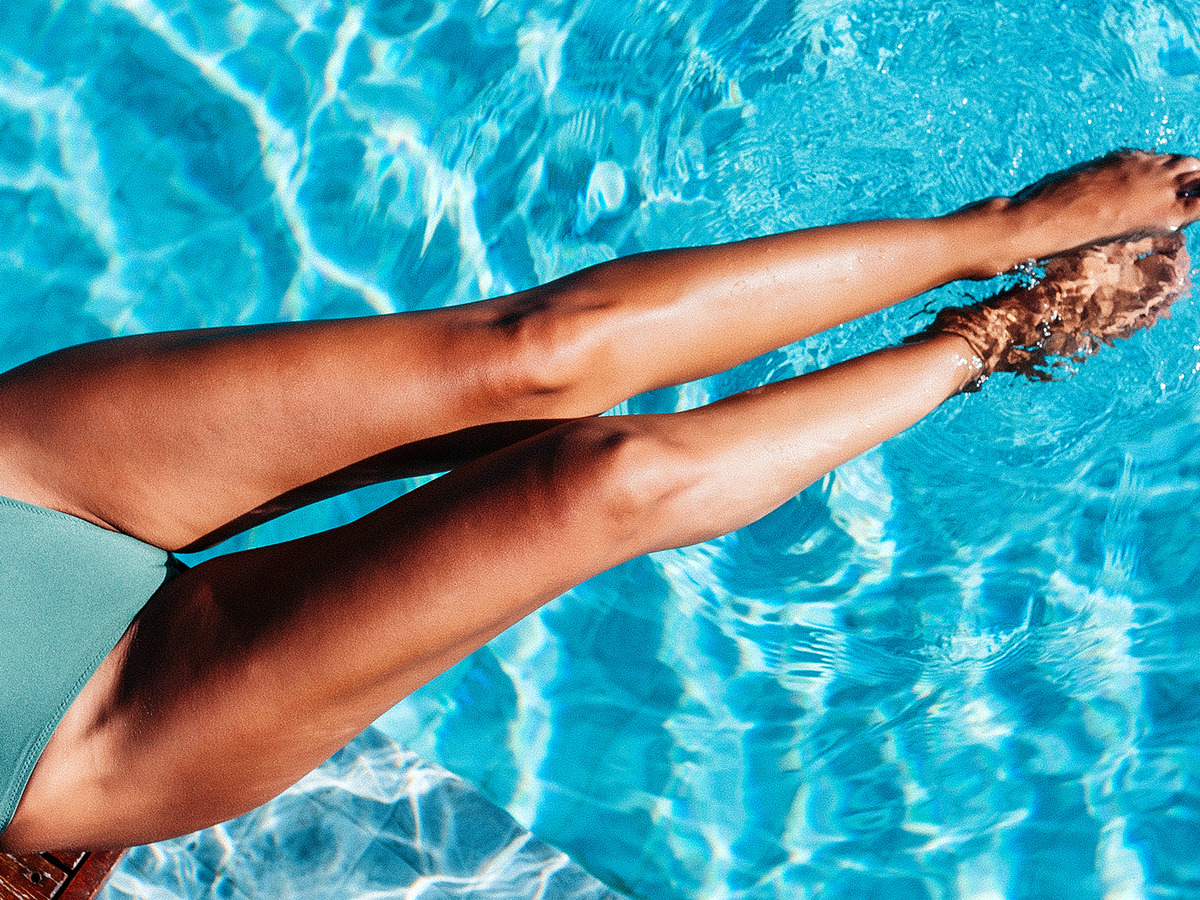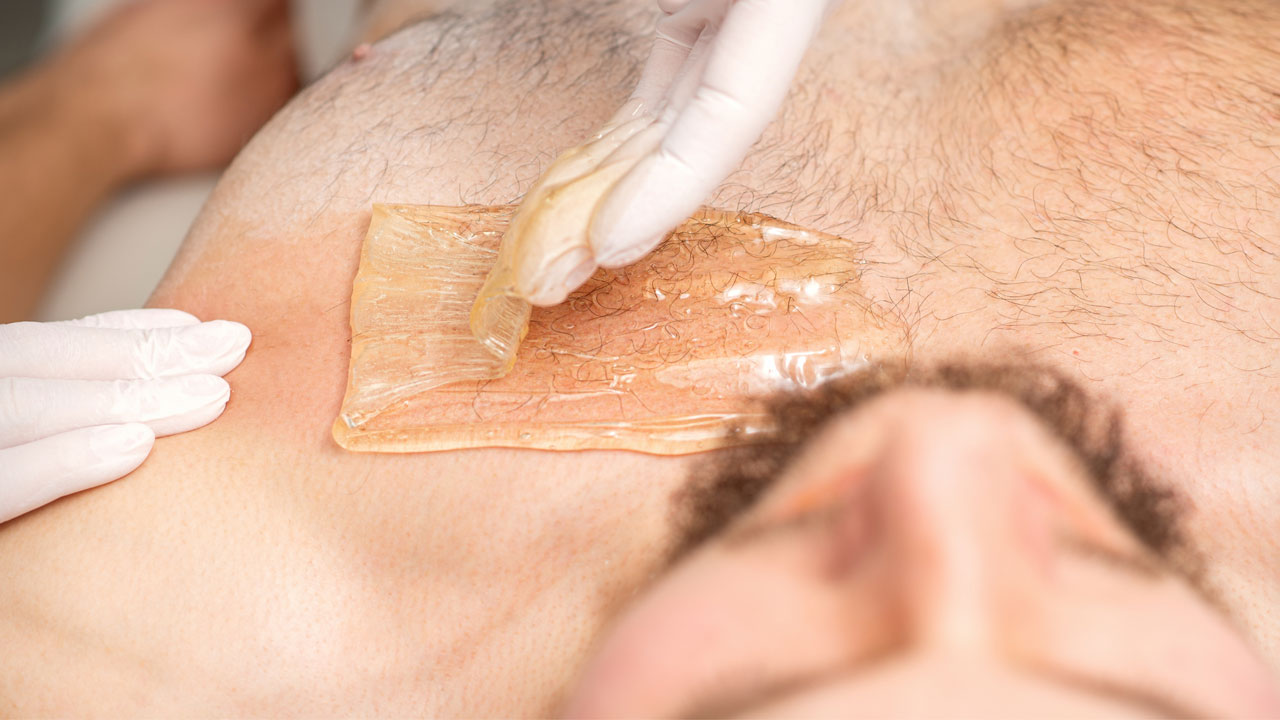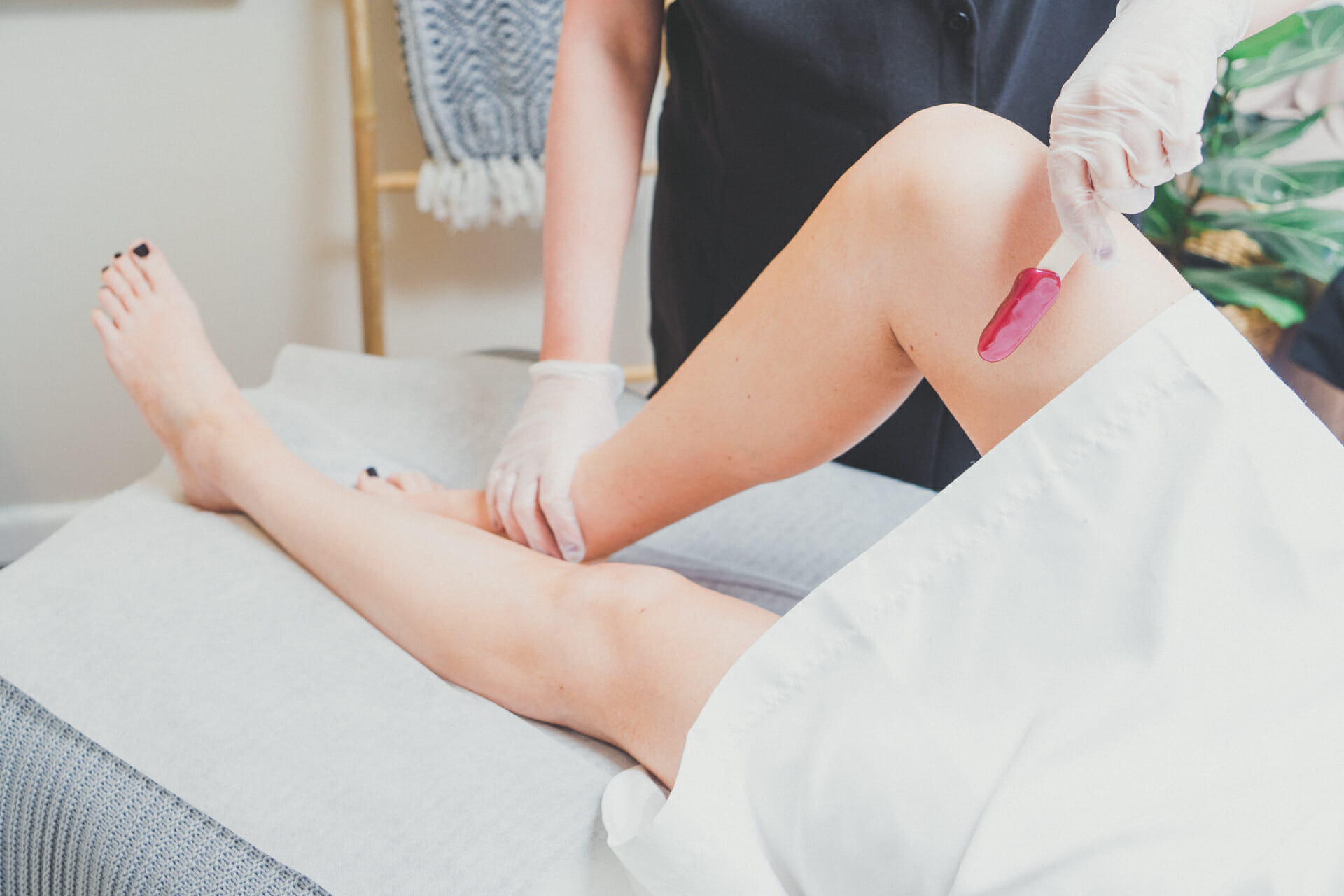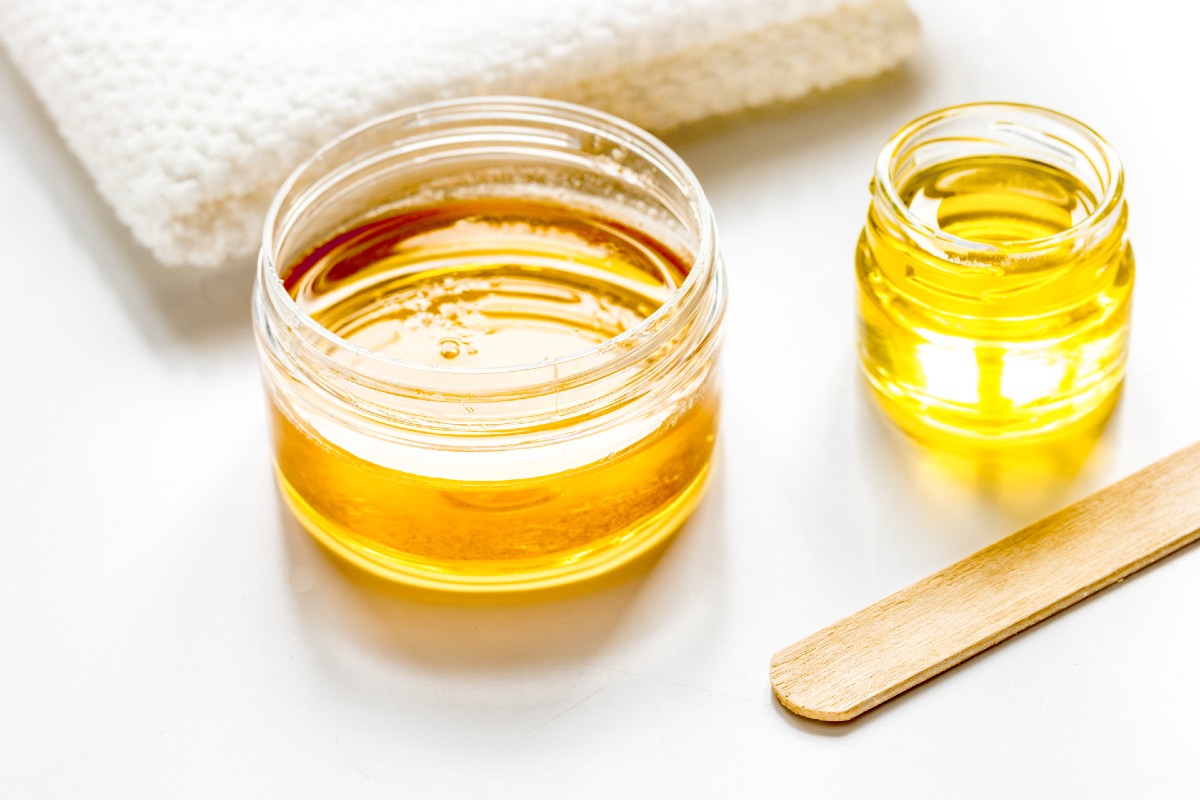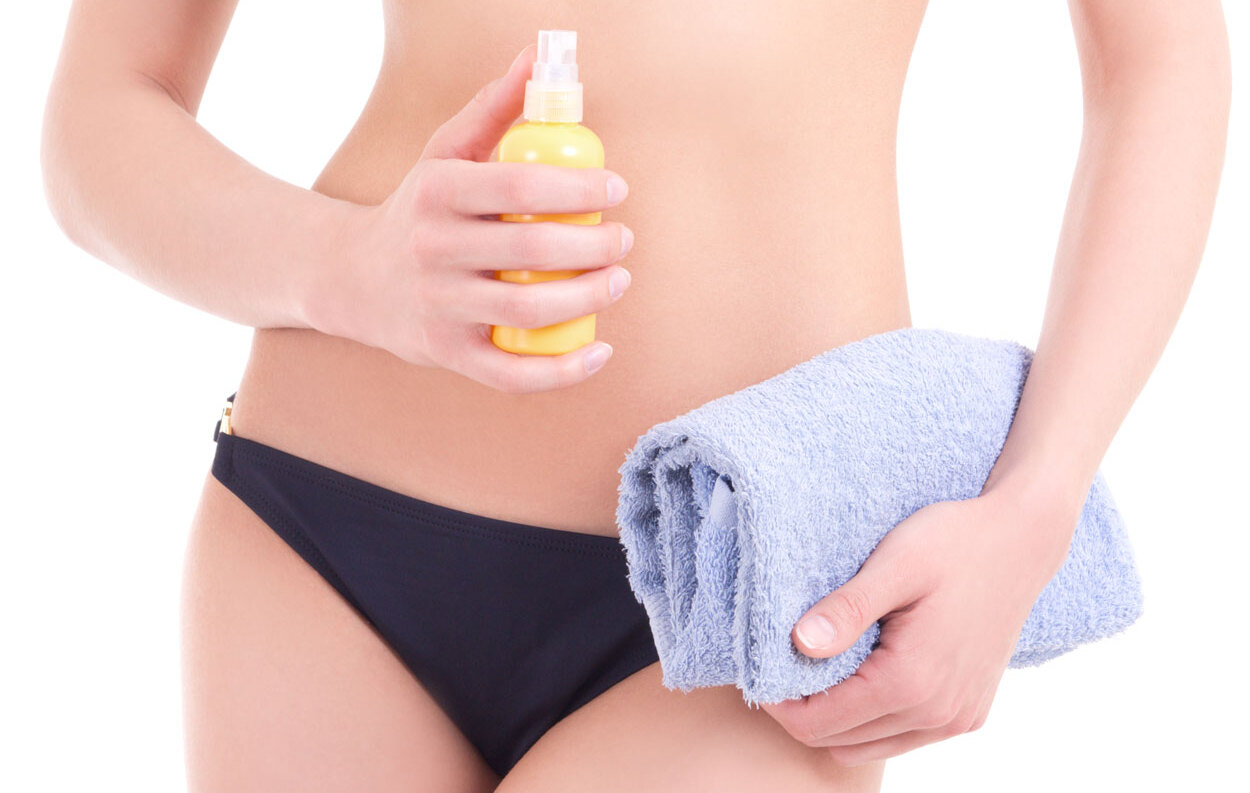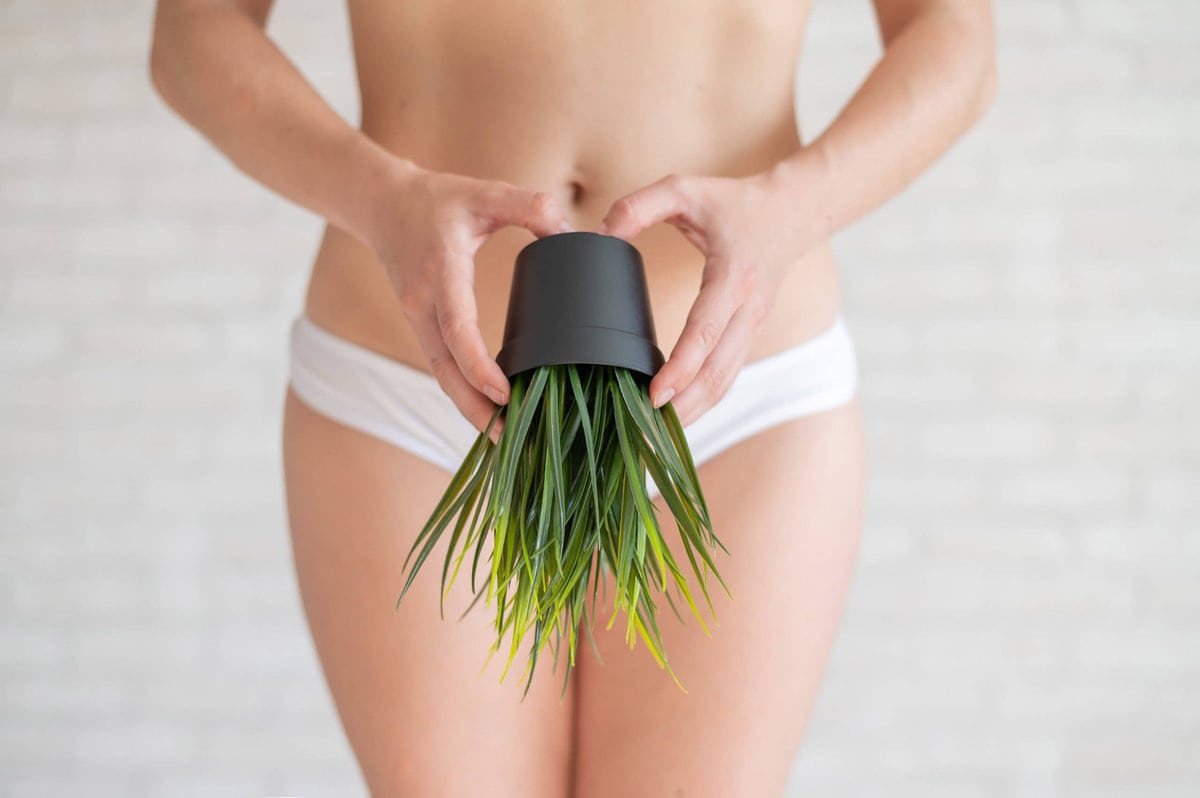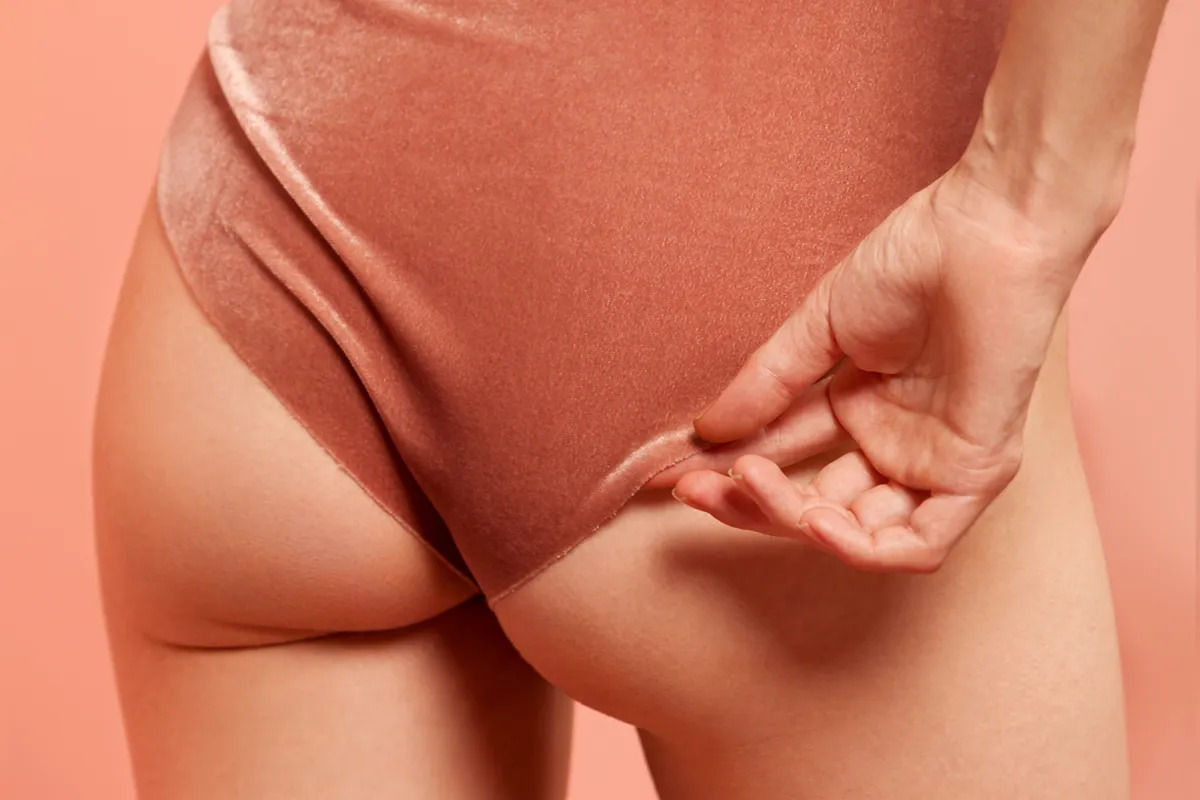Home>Latest Posts>How Bad Does A Brazilian Wax Hurt


Latest Posts
How Bad Does A Brazilian Wax Hurt
Modified: August 5, 2023
Find out how bad a brazilian wax hurts and get tips for women to minimize pain.
(Many of the links in this article redirect to a specific reviewed product. Your purchase of these products through affiliate links helps to generate commission for Under-tec.com, at no extra cost. Learn more)
Table of Contents
How Bad Does A Brazilian Wax Hurt
As many people who have experienced it can attest, getting a Brazilian wax is not exactly a walk in the park. The thought of having hot wax applied to sensitive areas and hair being ripped out from the root can be daunting, and understandably so. However, the level of pain experienced during a Brazilian wax can vary from person to person, with some describing it as mild discomfort while others find it more intense.
During a Brazilian wax, the esthetician will remove all the hair from the pubic area, including the front, back, and everything in between. The process involves applying warm wax to the hair, allowing it to adhere to the wax, and then swiftly pulling the wax and hair off the skin. While the initial application of wax may feel warm, it is the removal of the wax that can cause discomfort.
The pain experienced during a Brazilian wax is often described as a sharp, stinging sensation that lasts for a few seconds. This pain can be more intense for individuals who have thick or coarse hair, as well as those who are new to waxing. However, it’s important to note that the pain is temporary and generally subsides quickly after the wax strip is removed.
The level of pain experienced during a Brazilian wax can also be influenced by factors such as individual pain tolerance, menstrual cycle, and skin sensitivity. For some, the discomfort may be minimal and short-lived, while others may find it more intense and lingering. It’s important to communicate with your esthetician throughout the process and let them know if you are experiencing any discomfort.
If you’re concerned about the pain associated with a Brazilian wax, there are a few things you can do to help minimize it. First, consider taking an over-the-counter pain reliever, such as ibuprofen, about 30 minutes before your appointment to help reduce sensitivity. Additionally, scheduling your appointment during a time when your pain tolerance is higher, such as after menstruation, can help make the experience more manageable.
Overall, while a Brazilian wax may cause some discomfort, the pain is temporary and many people find the results to be worth it. Remember to communicate with your esthetician, take steps to minimize pain, and properly care for your skin afterward to ensure a more comfortable experience.
Introduction
When it comes to hair removal, there are several methods to choose from, ranging from shaving to laser treatments. One popular option, particularly among women, is a Brazilian wax. However, before diving into the world of Brazilian waxes, it’s natural to have questions and concerns, especially when it comes to the pain involved.
A Brazilian wax is a hair removal method that involves the removal of all pubic hair, including the front, back, and everything in between. It leaves the area completely smooth and is a preferred choice for those who want a long-lasting and clean result. While the thought of getting a Brazilian wax can be intimidating, understanding the process, pain level, and factors that can affect the experience can help alleviate some of those concerns.
In this article, we will explore just how bad a Brazilian wax really is when it comes to pain. We will delve into the process of Brazilian waxing, including what to expect during the appointment. We will also discuss the various factors that can influence the pain level experienced during a Brazilian wax, such as hair thickness, pain tolerance, and skin sensitivity. Additionally, we will provide tips on how to minimize the pain and discomfort associated with this hair removal method.
It’s important to remember that pain is subjective, and what one person may find tolerable, another may find unbearable. However, by gaining a better understanding of what to expect and how to prepare for a Brazilian wax, you can approach the experience with more confidence and make an informed decision about whether it’s the right hair removal method for you.
What is a Brazilian Wax?
A Brazilian wax is a type of hair removal method that involves the complete removal of pubic hair, including the front, back, and everything in between. It is a popular choice among individuals who prefer a clean and smooth look in their intimate areas. Unlike other hair removal methods like shaving or using depilatory creams, a Brazilian wax provides longer-lasting results, typically lasting up to four weeks.
During a Brazilian wax, a trained esthetician will use warm wax to remove the hair from the root. The esthetician will apply the warm wax to the desired areas and then place a cloth strip over the wax. The strip is then quickly pulled off, removing the wax and hair in one motion. This process is repeated until all desired hair is removed.
This method of hair removal offers several advantages over other options. First and foremost, a Brazilian wax provides a smooth and clean look and feel. It also lasts longer than traditional shaving as it removes the hair from the root, which helps to slow down the regrowth process. Additionally, repeated waxing sessions can lead to reduced hair density over time.
It’s important to note that Brazilian waxing is a personal choice, and individuals should consider their comfort level, personal preferences, and any potential skin sensitivities before deciding to get one. It’s recommended to consult with a professional esthetician who specializes in Brazilian waxing to ensure a safe and effective procedure.
Furthermore, practicing proper aftercare is crucial to maintain the results of a Brazilian wax. This includes avoiding tight clothing, hot baths, and activities that may cause excessive sweating immediately after the waxing session. Regular exfoliation can also help prevent ingrown hairs and keep the skin smooth.
Overall, a Brazilian wax is a popular hair removal method that provides a long-lasting and smooth result. Understanding the process and aftercare involved can help individuals make an informed decision and approach their Brazilian wax experience with confidence.
The Process of Brazilian Waxing
The process of Brazilian waxing involves several steps to ensure effective and safe hair removal. While the exact process may vary slightly depending on the esthetician or salon, the general steps involved are as follows:
- Cleansing: Before starting the waxing process, the esthetician will cleanse the area to be waxed. This helps remove any oils, dirt, or sweat that could interfere with the wax adhering to the hair.
- Trimming: If the hair is too long, the esthetician may trim it to a suitable length. This ensures that the wax can effectively grip the hair and facilitate its removal.
- Application of wax: The esthetician will then apply warm wax to small sections of the pubic area using a wooden spatula or a disposable applicator. The wax is typically spread in the direction of hair growth.
- Placement of cloth strip: Once the wax is applied, a cloth strip is placed on top of it and pressed firmly. The strip adheres to the wax and serves as a handle for easy removal.
- Quick removal: The esthetician will swiftly remove the cloth strip in one swift motion, pulling against the direction of hair growth. This swift motion helps minimize discomfort and ensures the hair is removed from the root.
- Repetition: The process is repeated on different sections of the pubic area until all desired hair is removed. The esthetician may reapply wax to the same area multiple times to ensure complete hair removal.
- Tweezing: After the majority of the hair is removed, the esthetician may use tweezers to pluck any stray hairs or to achieve a more precise result.
- Finishing touches: Once the waxing is complete, the esthetician may apply a soothing lotion or gel to the skin to help calm any redness or irritation.
It’s important to note that during the process of Brazilian waxing, a certain level of discomfort is to be expected. The sensation is often described as a sharp, stinging pain that subsides quickly. However, individual pain thresholds may vary and can be influenced by factors such as hair thickness, pain tolerance, and skin sensitivity.
By following a thorough and systematic process, estheticians ensure a thorough and effective Brazilian waxing experience, leaving the area smooth and hair-free.
Preparing for a Brazilian Wax
Preparing for a Brazilian wax is essential to ensure a successful and comfortable experience. By following some simple guidelines, you can help make the process smoother and minimize any potential discomfort. Here are some tips to help you prepare for a Brazilian wax:
- Allow hair growth: To achieve optimal results, it is recommended to let the hair in the pubic area grow to a length of about a quarter-inch or more. This ensures that the wax can effectively grip the hair and facilitate its removal. Avoid shaving or using other hair removal methods at least two weeks before your appointment.
- Exfoliate the area: A few days prior to your appointment, gently exfoliate the pubic area using a mild scrub or exfoliating glove. This helps remove dead skin cells and allows for smoother wax application and hair removal.
- Stay clean and dry: On the day of your appointment, ensure that your pubic area is clean and dry. Avoid using any lotions, oils, or creams on the area as they can interfere with the wax adhering to the hair.
- Communicate with your esthetician: Before your appointment, communicate with your esthetician about any specific concerns or preferences you may have. This includes informing them of any known allergies, skin sensitivities, or medical conditions that could affect the waxing process.
- Pain management: If you anticipate that you may experience discomfort during the waxing process, consider taking an over-the-counter pain reliever such as ibuprofen about 30 minutes before your appointment. This can help reduce sensitivity and make the experience more bearable.
- Wear loose-fitting clothing: Choose loose-fitting clothing to wear to your appointment. Tight clothing can rub against the freshly waxed skin and potentially cause irritation or redness.
- Maintain proper hygiene: After your appointment, be mindful of maintaining proper hygiene to prevent any infections or ingrown hairs. Avoid hot baths, swimming pools, saunas, or activities that may cause excessive sweating for at least 24 hours after waxing.
By following these simple guidelines, you can ensure that you are well-prepared for your Brazilian waxing appointment. Proper preparation can help make the experience more comfortable and help achieve the desired results.
Does a Brazilian Wax Hurt?
One of the burning questions when it comes to getting a Brazilian wax is, “Does it hurt?” The answer is that the level of pain experienced during a Brazilian wax can vary from person to person. While some individuals may find it to be a relatively painless experience, others may describe it as uncomfortable or even painful.
During a Brazilian wax, the esthetician will apply warm wax to the pubic area, allowing it to adhere to the hair. Then, using a quick motion, they will remove the wax and hair from the root. It is the swift removal of the wax that can cause some discomfort.
Many people describe the sensation during a Brazilian wax as a sharp, stinging pain that lasts for just a few seconds. This discomfort is often tolerable, as it is short-lived. Additionally, the more frequently you get waxed, the less painful the experience may become, as the hair becomes finer and weaker with time.
Factors like hair thickness, pain tolerance, and skin sensitivity can also influence the level of pain experienced during a Brazilian wax. Individuals who have thick or coarse hair may experience more discomfort, as the hair is deeply rooted. On the other hand, those with finer hair might find the process less painful.
It is worth mentioning that the first Brazilian wax tends to be the most uncomfortable, as the hair follicles are firmly rooted in the skin. However, subsequent waxing sessions tend to be less painful, as the hair becomes more accustomed to the process.
While a Brazilian wax may cause some discomfort, it is important to remember that the pain is temporary. It subsides quickly after the wax strip is removed, leaving the area smooth and hair-free. Additionally, the results of a Brazilian wax can last up to four weeks, making it a popular choice for many individuals.
Overall, the pain experienced during a Brazilian wax is subjective and can vary from person to person. However, with proper preparation and communication with your esthetician, you can minimize discomfort and approach the experience with more confidence.
Factors That Affect the Pain Level
When it comes to the pain level experienced during a Brazilian wax, several factors can influence the intensity of the discomfort. Understanding these factors can help individuals better prepare for their waxing session and manage their expectations. Here are some key factors that can affect the pain level:
- Hair Thickness: The thickness of the hair being waxed can play a role in the pain experienced during a Brazilian wax. Thick or coarse hair tends to have stronger and deeper roots, making it more painful to remove. On the other hand, individuals with finer hair may experience less discomfort.
- Pain Tolerance: Each person has a different pain threshold. What may be uncomfortable to one person may be tolerable to another. Some individuals have higher pain tolerance levels and can handle the sensation of waxing more easily. Those with lower pain thresholds may find the process more uncomfortable or even painful.
- Skin Sensitivity: The sensitivity of the skin in the pubic area can influence the pain experienced during a Brazilian wax. Individuals with more sensitive skin may be more prone to experiencing discomfort or even redness and irritation after waxing. It is important to communicate any skin sensitivities or allergies with the esthetician to ensure proper care and precautions are taken.
- Frequency of Waxing: The frequency of waxing can also impact the pain level. Initially, the first few waxing sessions may be more painful as the hair follicles are firmly rooted. However, with regular waxing, the hair becomes weaker and finer over time, leading to a less painful experience.
- Esthetician Experience: The experience and technique of the esthetician performing the Brazilian wax can also affect the pain level. Experienced estheticians are skilled at minimizing discomfort through swift and efficient wax removal techniques. It is recommended to choose a reputable salon or esthetician with a track record of providing quality waxing services.
While these factors can contribute to the pain level experienced during a Brazilian wax, it is important to remember that the discomfort is temporary and typically subsides quickly after the waxing session. Proper preparation, communication with the esthetician, and following aftercare instructions can help manage any discomfort or potential side effects.
By considering these factors and taking steps to mitigate any potential pain or discomfort, individuals can approach their Brazilian waxing experience with more confidence and achieve the desired smooth and hair-free results.
How to Minimize Pain During a Brazilian Wax
While a certain level of discomfort is common during a Brazilian wax, there are several strategies you can employ to help minimize the pain and discomfort associated with the process. By following these tips, you can make your waxing experience more manageable and less agonizing:
- Communicate with your esthetician: Before the waxing session begins, make sure to discuss your pain tolerance level with your esthetician. They can adjust their technique and provide guidance tailored to your comfort level.
- Take over-the-counter pain relief: Consider taking an over-the-counter pain reliever, such as ibuprofen or acetaminophen, about 30 minutes prior to your appointment. This can help reduce sensitivity and minimize discomfort during the waxing process.
- Choose the right timing: Schedule your Brazilian waxing appointment strategically. Avoid booking your session during or just before your menstrual cycle, as your pain tolerance may be heightened during this time. Opt for a time when you feel more relaxed and your pain threshold is higher.
- Relaxation techniques: Engage in relaxation techniques before and during the waxing procedure to help alleviate anxiety and reduce pain perception. Deep breathing exercises or listening to calming music can help you relax and distract yourself from the discomfort.
- Topical numbing creams: Some individuals find relief by applying a numbing cream to the pubic area before the waxing session. These creams can help desensitize the skin and reduce pain sensation. Consult with your esthetician or a healthcare professional to determine if this option is suitable for you.
- Consider a professional with experience: Choose a reputable esthetician or salon with experienced professionals who specialize in Brazilian waxing. They will have refined techniques to minimize pain and ensure a more comfortable experience.
- Take breaks if needed: If the pain becomes too intense during the waxing process, don’t hesitate to communicate with your esthetician and ask for short breaks. This can give you a moment to recover and continue with the session when you’re ready.
- Frequent waxing: Finally, regular waxing sessions can help reduce sensitivity and discomfort over time. By consistently removing the hair from the root, the hair follicles weaken, resulting in finer regrowth and less pain during subsequent waxing sessions.
Remember that everyone’s pain tolerance is unique, and what may work for one person may not necessarily work for another. Experiment with different strategies and adjust as needed to find what works best for you. By proactive and taking steps to minimize pain, you can make your Brazilian waxing experience more tolerable and achieve the desired results with less discomfort.
Aftercare Tips for a Brazilian Wax
Proper aftercare is crucial to ensure that you maintain the results of your Brazilian wax and promote healthy skin in the treated area. Following these aftercare tips can help minimize discomfort, prevent infections, and keep your skin smooth and hair-free for longer:
- Avoid touching the area: It’s important to avoid touching the freshly waxed area as much as possible, especially with unwashed hands. Touching the area can introduce bacteria and increase the risk of infection.
- Avoid hot baths or showers: For at least 24 to 48 hours after your Brazilian wax, avoid hot baths, hot tubs, or any activities that may cause excessive sweating. Hot water can irritate the sensitive skin and increase the risk of post-waxing discomfort.
- Wear loose, breathable clothing: Opt for loose-fitting clothing made from breathable fabrics, such as cotton, to reduce friction and allow the skin to breathe. Tight clothing can rub against the freshly waxed skin and cause irritation or ingrown hairs.
- Stay away from lotions and fragrances: Avoid applying lotions, creams, or fragrances to the waxed area for at least 24 hours. These products can irritate the skin and potentially lead to infection.
- Exfoliate gently: After a few days post-waxing, you can gently exfoliate the waxed area using a mild exfoliating glove or a gentle exfoliating scrub. Exfoliation helps to prevent ingrown hairs and keeps the skin smooth. However, be cautious not to exfoliate too soon after the wax, as this can cause further irritation.
- Avoid sun exposure: Direct sun exposure should be avoided for at least 24 to 48 hours after your Brazilian wax. The freshly waxed skin is more sensitive to UV rays and can be prone to sunburn. If you must be in the sun, apply a broad-spectrum sunscreen with SPF 30 or higher to protect the area.
- Moisturize regularly: After the initial 24 to 48 hours, it’s beneficial to moisturize the waxed area regularly. Opt for a gentle, fragrance-free moisturizer to soothe the skin and keep it hydrated.
- Avoid shaving: While the hair regrows after a Brazilian wax, resist the urge to shave between appointments. Shaving disrupts the hair growth cycle and can lead to ingrown hairs. Let your hair grow until your next waxing session for more effective and smoother results.
By following these aftercare tips, you can help ensure that your Brazilian wax results last longer and that your skin remains healthy and comfortable. If you experience any persistent redness, swelling, or irritation, consult with your esthetician or a healthcare professional for further guidance.
Conclusion
Getting a Brazilian wax is a personal choice, and the level of pain experienced during the process can vary from person to person. While some individuals may find it uncomfortable, others may describe it as more painful. However, by understanding the process of Brazilian waxing, preparing properly, and considering the various factors that can affect pain levels, you can approach your waxing session with more confidence.
Communicating with your esthetician, taking over-the-counter pain relievers, choosing the right timing, and practicing relaxation techniques can help minimize discomfort during the waxing process. Additionally, working with an experienced esthetician and scheduling regular waxing sessions can lead to a decrease in pain over time.
After your Brazilian wax, it’s important to follow proper aftercare tips to maintain the results and promote healthy skin. Avoiding excessive heat, wearing loose clothing, and practicing gentle exfoliation and moisturization are essential. Taking care to avoid sun exposure and refraining from shaving between sessions can also contribute to better results and a more comfortable experience.
Remember, everyone’s pain tolerance and experience are unique, so it’s important to find what works best for you. By preparing properly, communicating with your esthetician, and practicing good aftercare, you can minimize pain and discomfort and enjoy the benefits of a smooth and hair-free intimate area.
Ultimately, deciding to get a Brazilian wax is a personal choice. It’s important to weigh the pros and cons, consider your pain tolerance, and consult with a professional to determine if it’s the right hair removal method for you. With proper preparation and care, a Brazilian wax can provide long-lasting results and a clean and smooth look that many individuals find desirable.
